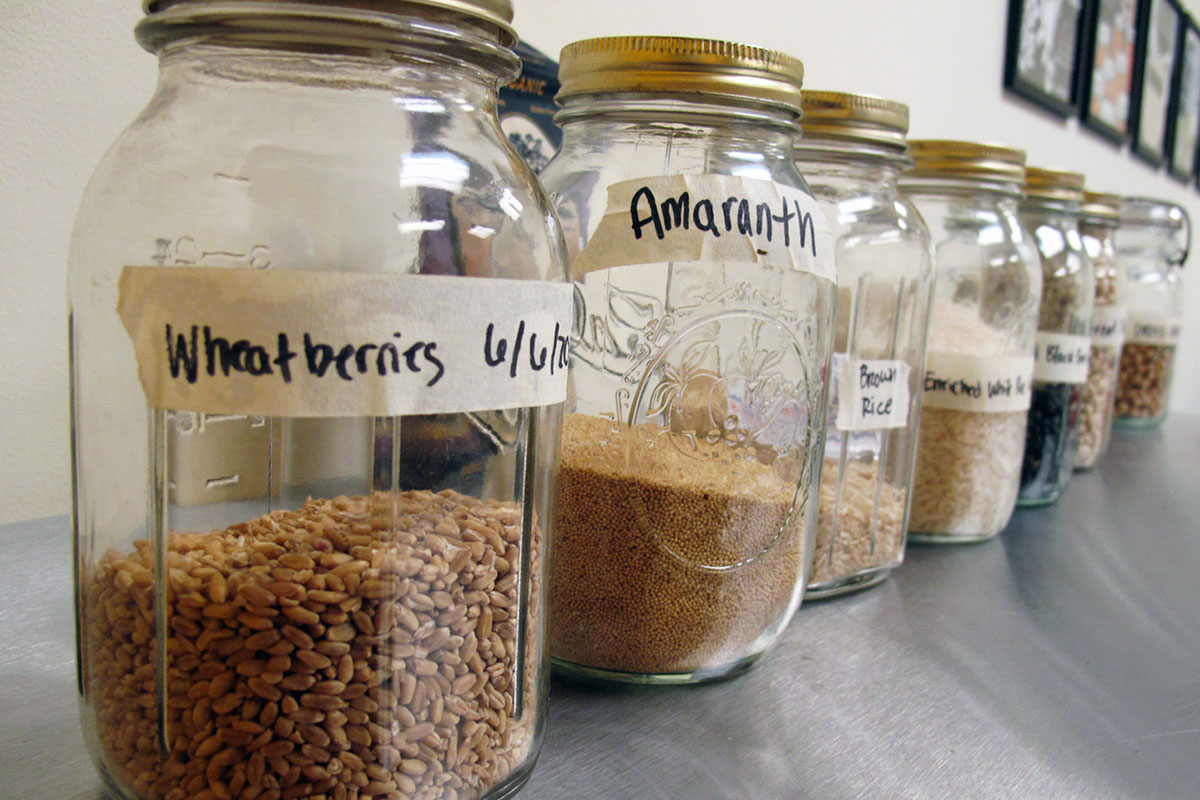Seven Whole Grains to Try Now

Whole grains photo via Flickr/WFIU Public Radio
Remember the days when people didn’t know how to pronounce quinoa? Once a trendy up-and-coming health food, it’s now a pantry staple—and there are plenty of other whole and ancient grains just waiting to achieve the same level of healthy food fame.
“Grains consist of three parts: the endosperm, the germ, and the bran. The endosperm contains the carbohydrates and some protein; the germ contains healthy fat, B vitamins, minerals, and protein; and the bran contains fiber and B vitamins,” says registered dietitian Lauren Mayer. “Whole grains, as the name suggests, have all three components and thus all the nutrients grains have to offer.”
And, Mayer says, unless you have a diagnosed medical condition like celiac disease, there’s no reason to cut whole grains from your diet. (Yes, carb haters, even you.) Here, Mayer gives us the seven whole grains you probably haven’t heard of—but should get to know.
Amaranth: A versatile whole grain, Mayer says amaranth can be cooked on its own, popped like popcorn, or used as an alternative to granola. “The leaves of amaranth plants are also edible and add a hearty dose of nutrition to stir fries,” she says.
How to use it: Amaranth pudding with hazelnuts and berries
Einkorn: Einkorn is a derivative of farro, a slightly better-known ancient grain. “Compared to modern day wheat, einkorn is easier to digest and has higher amounts of protein, phosphorus, and potassium,” Mayer says, adding that it’s also high in beta carotene.
How to use it: Zucchini and rice burritos on einkorn tortillas
Kamut: “Kamut has a buttery and sweet taste, thanks to the 15-times higher sugar content compared to common wheat,” Mayer notes. Though sugar phobes may want to stay away, the grain is high in protein, vitamin E, fiber, manganese, and magnesium.
How to use it: Chicken, sweet onion, and kale salad with kamut
Freekeh: Allegedly, freekeh was discovered 2,000 years ago when a field of green wheat caught fire and farmers rubbed off the burned shells and cooked the grain inside. “It has an impressive fiber content,” Mayer says, “making it a filling choice to add to your diet.”
How to use it: Chipotle black bean freekeh sliders
Triticale: The new kid on the block, triticale has only been sold commercially for about 35 years.
“Triticale is one of the grains highest in protein and is a good source of fiber,” Mayer notes. “The rye component contributes a rich source of arabinoxylan, a type of fiber with high antioxidant activity linked to bowel health and weight management.”
How to use it: Homemade triticale chia crackers
Kaniwa: No, it’s not just quinoa pronounced incorrectly. Kaniwa is, however, similar to quinoa in terms of nutrition and preparation. Mayer says that it doesn’t have quinoa’s bitter coating, which makes it easy to prepare.
How to use it: Chickpea salad with quinoa and kaniwa
Wheat berries: Wheat berries’ chewy texture makes it a great choice for salads and breakfast recipes, but Mayer warns that they’re not the easiest grain to work with. “They require a long cooking time and should be soaked overnight before boiling for an hour,” she recommends. “It’s worth the time, but you can find parboiled wheat berries to shorten the cooking time.”
How to use it: Apple, wheat berry, and yogurt parfaits


